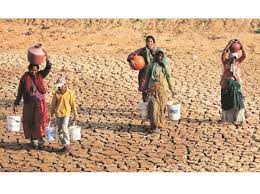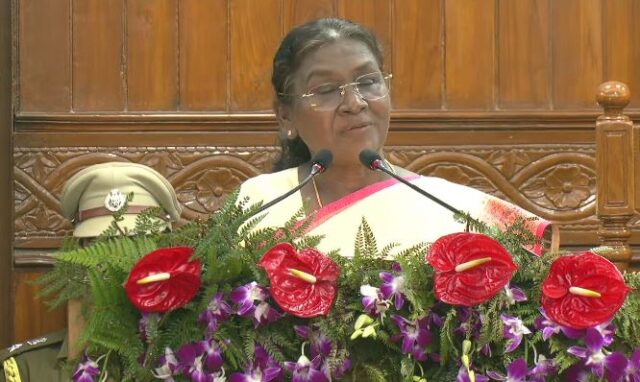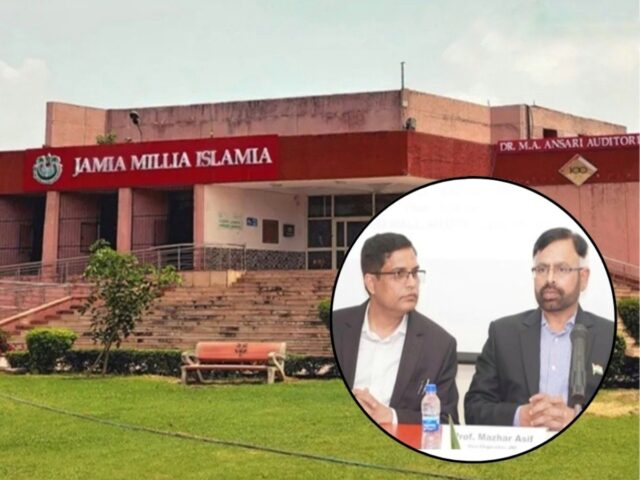If emissions are not cut, there may be unbearable heat in India, lack of food and water

In its latest report released on Monday, the Intergovernmental Committee on Climate Change (IPCC) warned that if emissions are not cut in India, there could be consequences for human existence ranging from unbearable heat, food and water shortages and sea water- An increase in the level can lead to serious economic damage.
The second volume of the IPCC Working Group-II report on ‘Climate Change 2022: Impacts, Adaptation and Sensitivity’ states that if emissions are not eliminated rapidly, globally, heat and humidity conditions beyond human tolerance and India will be among those places which may have to face these unbearable conditions. It said, “If there is an increase in the estimated temperature by one degree Celsius to four degree Celsius, then the production of rice in India may decrease by 10 to 30 percent, while that of maize by 25 to 70 percent.”
According to the report, differences in temperature, relative humidity and rainfall will be responsible for the increase in dengue cases or prevalence rates globally, including in India. It has been said that by the end of the century in countries with rising temperatures, compared to countries with low temperatures, there may be a decline of 10 to 23 percent in global GDP. The report also said, “The heatwave, including heatwaves, has intensified in the cities, increasing the incidence of air pollution and limiting the functioning of major infrastructure.”
According to the report, these impacts are concentrated among economically and socially marginalized urban dwellers… Infrastructure including transport, water, sanitation and energy systems will be affected, resulting in economic loss, disruption of work etc. One of the lead authors of the chapter on cities, settlements and major infrastructure in the report, Prof. Anjal Prakash said, “Urban India is more at risk than other regions with an estimated population of 877 million by 2050, which is almost double of 48 crore in 2020. Currently, the urbanization in the country is 35 percent, which is likely to increase to 40 percent in the next 15 years. Mega-cities are growing rapidly and even small centers are growing rapidly.
“Just the density of population in these cities makes these settlements extremely vulnerable to climate change,” he said. The report mentions the wet-bulb temperature, which adds to the heat and humidity. A wet-bulb temperature of 31 °C is extremely dangerous for humans, while at 35 °C no adult and healthy human can survive in it for more than about six hours.
According to the IPCC, currently the wet-bulb temperature in India rarely exceeds 31 °C, with the maximum wet-bulb temperature being 25-30 °C in most parts of the country.
According to this, if emissions are cut to the levels currently reported, many parts of northern and coastal India will reach extremely dangerous wet-bulb temperatures of more than 31 °C by the end of the century. If emissions continue to rise, wet-bulb temperatures will reach or exceed the intolerable limit of 35°C in most parts of India.
India, Pakistan are worst affected by floods, droughts due to climate change
The IPCC has also warned in this report that the ever-deteriorating climate situation is threatening food security in South Asia. Also warned that due to climate change, the risk of flood and drought conditions in India and Pakistan is increasing. The second volume of the IPCC Working Group-II report on ‘Climate Change 2022: Impacts, Adaptation and Sensitivity’ states that climate change will bring increased threats to the agriculture and food systems in Asia, with varying impacts across the region. will have an effect.
“For example, severe climate-related conditions in South Asia are increasing the risk of food security, with the greatest impact on agriculture-based economies such as India and Pakistan,” the report said. The report warned that climate change would adversely affect fisheries, marine life and crop yields, especially in South and Southeast Asia.






